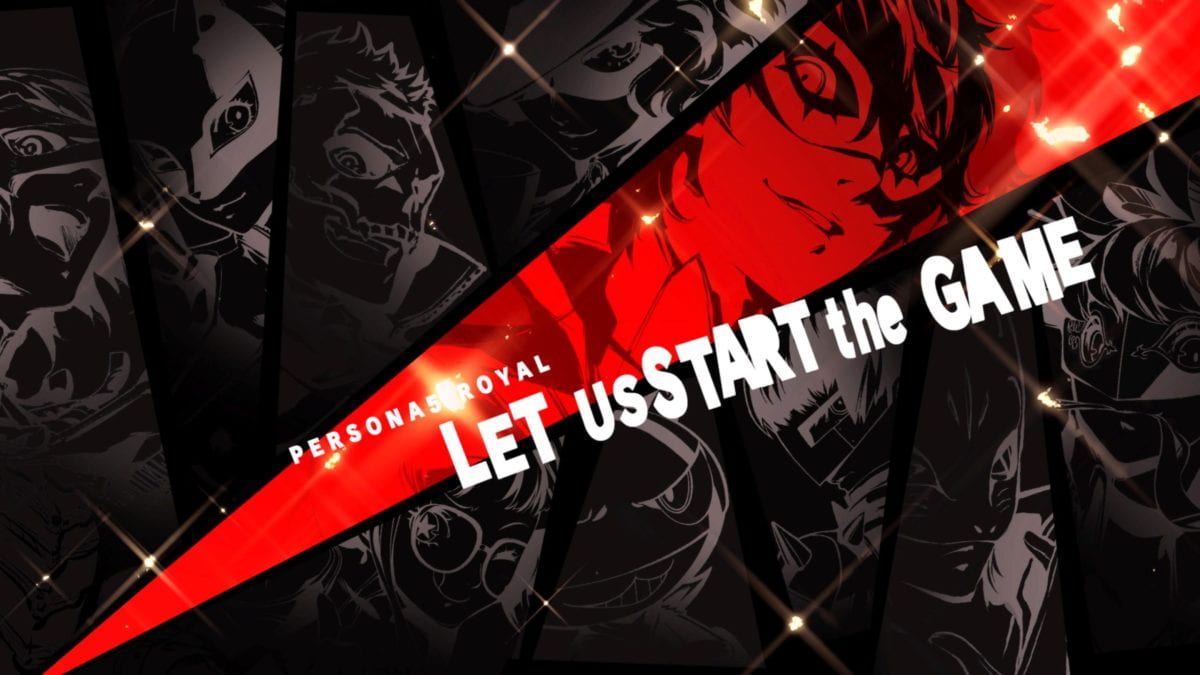CW: Violence and suicide are mentioned.
The term “memento” has a complex etymology. From the Latin for “remember” or “I remember,” memento may point to a sinister remnant or a “memento mori,” a physical reminder of the death that awaits us all like the skull in Shakespeare’s Hamlet. Yet, it can also be something innocuous, a souvenir like a Disney World button thrown in a junk drawer next to the fridge.
In Persona 5 Royal, “Mementos” is a disturbing, ghastly dungeon area decorated with harrowing chains, gargantuan bones, and pulsating monsters. It also has a little kid robot thing named Jose that helps you out by hammering the ground when you give him flowers. Oh yeah, and you drive around in a crowded cat jalaopy. Like the complicated history of the term, P5R’s Mementos is strange and familiar, disturbing and inviting.

Looking good, Joker!
Mementos is one of a number of “Palaces,” a metaphysical manifestation of the distorted desires of people’s hearts that you and your team can access through a phone app. (Yes the game is as crazy and lovely and JRPG as it sounds.) Typically, Palaces come from one individual’s heart, and these Palaces provide access to the person’s unconscious thoughts of the physical spaces around them. For example, the first villain in the game, Kamoshida, is a PE Teacher at protagonist Joker’s school. He sees himself as the king of the school. By entering the Metaverse through the phone app, Joker and the squad come upon Kamoshida’s Palace which is a Castle that takes place of the school in the metaphysical world.
Following along?
Unlike the other Palaces, Mementos is made from the population as a whole, stemming from something akin to the collective unconscious of the city of Tokyo. Through the general population’s unconscious desires, Mementos has taken shape and is displayed as somewhat of a parallel of the city subway of Tokyo. Like how Kamoshida’s Palace was a Castle in place of a School, Mementos is the general public’s Palace that replaces the subway system with a… subway system with bones and blood?
Initially, Mementos is a completely optional section of the game. Joker and the team can go into Mementos to gain XP, find items, and acquire new Personas. Occasionally, side quests can be unlocked that require the player to take down certain enemies that are manifestations of particularly sinister or distorted hearts of people in Tokyo, such as an animal abuser or a sex trafficker. But as you continue in the game, you realize that you need to wipe out Mementos itself to truly save Tokyo from nefarious politicians… and a big bad god thingie of course. In the end, we see Tokyo citizens in cages, metaphorically choosing to imprison themselves in the Metaverse so they can worship the Holy Grail which is like an evil, succor-sucking chalice.
So maybe it’s a metaphor for how the business and working classes chain themselves to their work routines and by doing so lose their will to truly enjoy life? (Unfortunately, Japan does have an astonishingly high suicide rate, and the downward trend of the last decade has been reversed due to COVID isolation.) Or maybe it’s about how human desires like gluttony, sloth, power, etc. end up wiping us out?
I’m not too interested in really interpreting what the game “means,” but I am interested in how Persona 5 Royal makes a (digital) physical space that represented the hearts of Tokyo citizens. By giving us the ability to walk around in this meta world, what does the game tell us about Tokyo as a space both in and out of the game? What is the “essence” of Tokyo, and how does that get communicated to the player?
Something I want to explore more is the calendar system of the game. Basically, the game is divided into about 150 in-game “days” in which you can do a limited number (typically two) activities. By repeating this process many many times, the game establishes an overt rhythm to it, complete with transition screens that show one day transitioning to the next.
For a paper for my anthropology class, I might simply look at the transition screen below. What does this tell us about Tokyo temporally, spatially? What kinds of connections can we make between the depths of Mementos and the heights of the calendar? How does the physical construction of the collective unconscious of a city echo the kinds of sky views of the city? (I’m making a very very very tenuous connection to habitus, but that thought isn’t developed enough yet.)
I’m tired, so I’ll leave you with this gif and I’m saying tutty-byes.


David, some thoughts. Momentos also has a popularization in the form of the “Memento”, the adequate object to offer an myotomy of lived experience and imagistic symbol. So then the space of momentos is not just the location (subterranean, subconscious) but also the aggregate of the physical histories and memories we impart upon objects. And this tracks well with the capturing of “treasures” within the palaces of Persona 5. These too are within the realm of the memento – objects infused with the memories and desires of those in possession of them. By that logic, we might understand Monentos NOT as the who collective subconscious of Tokyo, but as the collective of it’s desires expressed through the adequate object. And at the bottom is the ultimate memento, the holy grail, a memory of a hegemonic superiority and eternal life. Suffice to say Tokyo’s sense of space is indistinguishable from it’s material culture to Persona 5, and it’s sense of consciousness is reflected within it’s material culture.